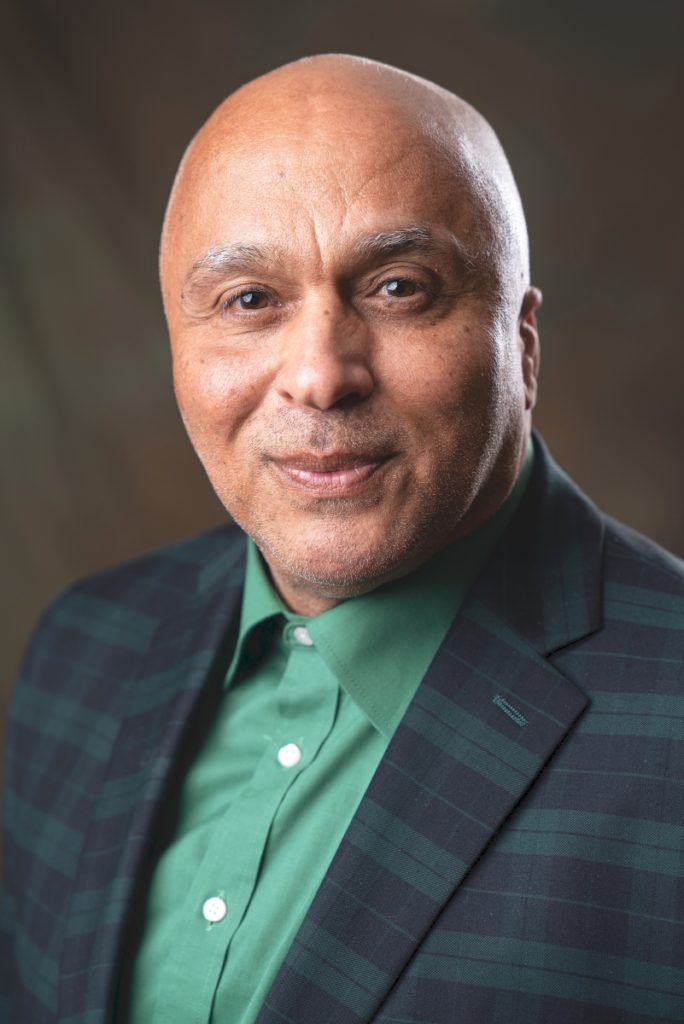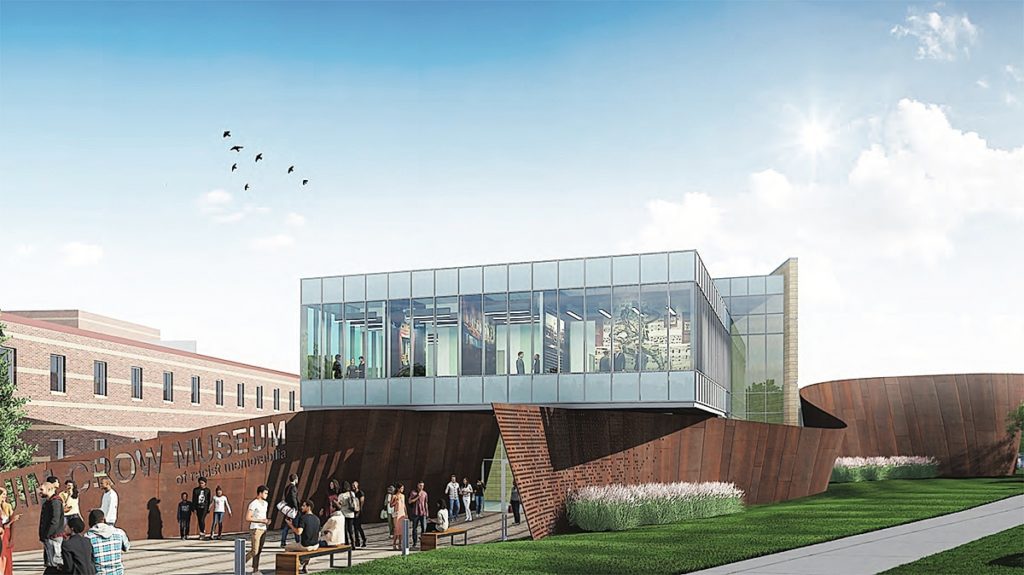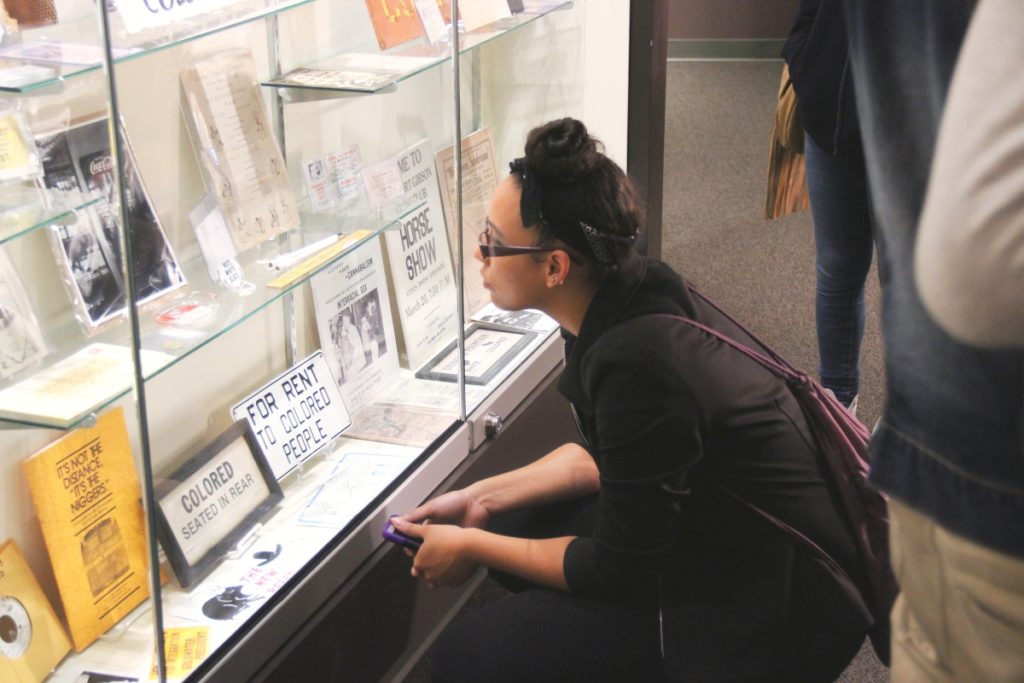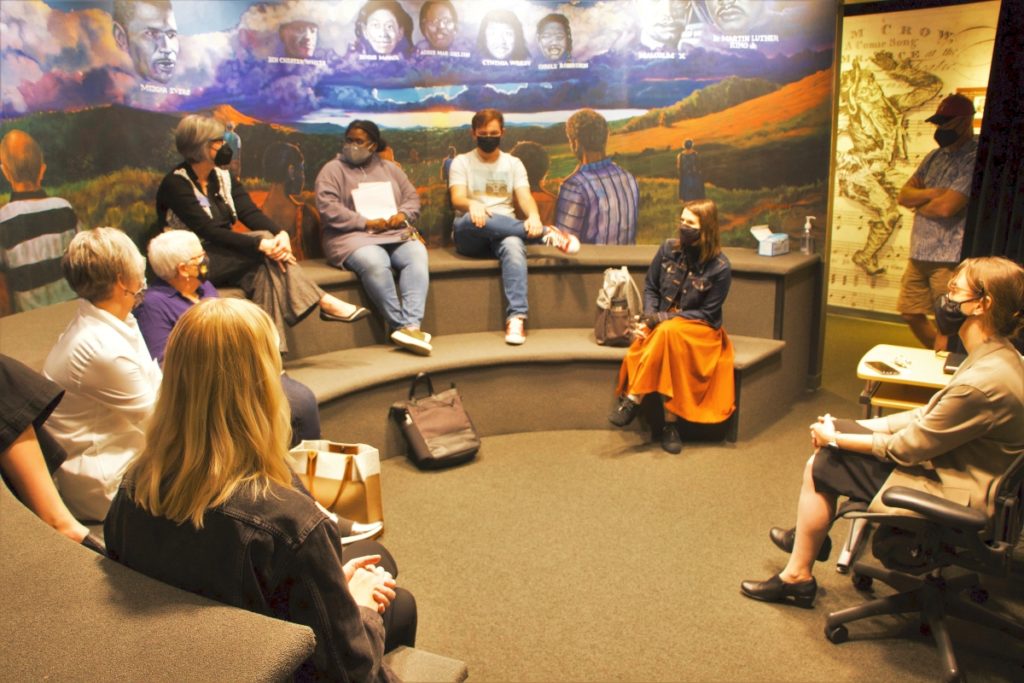
The Jim Crow Museum of Racist Memorabilia’s mission is to teach tolerance and to promote social justice using objects of intolerance. Dr David Pilgrim is the museum’s director and curator, as well as a professor and vice president of diversity, inclusion and strategic initiatives at Ferris State University, whose collection of anti-Black representation in all categories of “Black Americana” formed the core of the museum’s collection. In his 2005 essay (edited 2012) “The Garbage Man: Why I Collect Racist Objects,” available on the museum’s website, Dr Pilgrim describes his motivation to find a purpose for these reminders of a past that is far more present today than most Americans prefer to acknowledge. Now expanding and scheduled to open in 2025, Antiques and The Arts Weekly corresponded with Dr Pilgrim to learn more about the Jim Crow Museum (JCM), its progress since opening and his plans for the institution’s future.
Please tell our readers about yourself, and how you began to collect anti-Black objects.
I grew up a multiracial, Black-identified child in Mobile (and Prichard), Ala., during the last years of Jim Crow. The neighborhoods were segregated. The schools were either all-White or all-Black. The churches were as segregated as the schools. This was the world I knew, the world that shaped the ways that I came to understand race, race relations and racism.
I bought my first piece of racist object when I was about 12 years old in Mobile. It was a salt-n-pepper shaker. Today, some people would call the object Black memorabilia – but that label hides the ugliness that it represented. I broke it. In the years that followed, I bought similar objects: two- and three-dimensional items that caricatured, mocked and belittled Black people. I did not break those pieces. When I attended Jarvis Christian College, a Black Disciples of Christ school in rural Texas, I came to understand that objects (including racist items) could be used as teaching tools. Instead of breaking them, I began a lifelong quest to collect as many of these objects as I could afford to use as teaching tools.
What is the date range of the museum’s collection?
The museum focuses on the Jim Crow period; therefore, most of the objects in the collection were produced between the 1870s and the 1960s. We made an important decision years ago to also collect contemporary objects. So, the museum also has more than a thousand objects made in the last decade. Why include them? If there is a race-based incident that occurs in this country that receives national attention, someone will produce two- and three-dimensional objects that mock Black people – for example, think of a shooting target with Trayvon Martin as the target.
The collection continues to grow. Each day we receive packages from across the nation. At the beginning of 2023, we had more than 20,000 objects in the collection, with maybe a third on display.

Projected to begin construction in 2025, the new facility of the Jim Crow Museum as conceptualized by Neumann/Smith Architecture and Howard+Revis Design.
Does the museum draw balanced demographics?
We have visitors from all walks of life: civil rights advocates, college professors and students, amateur historians, police officers, civic and business leaders, documentarians, ministers and their congregations, and so forth. White Americans are the largest racial demographic to visit the museum, but white people are the largest racial group in the nation and this part of the country. There are many African Americans and other people of color who visit the museum, individually or in groups.
We have visitors from across the nation, mostly in couples or small groups. We have had visitors come from as far away as Queensland, Australia – they wanted to use the museum as a template to create a facility that housed everyday objects that defamed and mocked the Indigenous people of Australia. We, of course, have school groups come. We have many colleges that visit the museum, including Kent State, which has visited the museum for more than a decade.
What do you most want visitors to take with them after visiting the museum?
The purpose of studying the past is not to make us feel good or bad. It is to gain a better understanding of what happened. We want people to have a more intelligent, nuanced understanding of life during the Jim Crow period. I am reminded of George Santayana’s quote, “Those who cannot remember the past are condemned to repeat it.” I might suggest a variation, “Those who do not understand the hurtful mistakes in our past are more likely to repeat those mistakes.” The objects in the museum are the material evidence of the less noble parts of our past.
How do you think these collectibles serve the public by being on display, rather than being in a private collection?
In Martin Luther King Jr’s “Letter from Birmingham Jail,” he said, “Like a boil that can never be cured so long as it is covered up but must be opened with all its ugliness to the natural medicines of air and light, injustice must be exposed, with all the tension its exposure creates, to the light of human conscience and the air of national opinion before it can be cured.”
The hateful, mean-spirited objects in our collection are a boil on this country, and the best way to deal with their ugliness – and the injustices they shaped and reflected – is to expose them.

A visitor examines the Jim Crow Museum’s display cases.
What are the criteria for acquisitions, and do people try to sell objects to the museum?
We are in the process of revisiting the criteria for acquisitions. Yes, people try to sell objects to the museum. We rarely purchase objects, in part, because we have the objects necessary to tell the stories that we need to tell. Well, that’s not completely true. In the next couple of years, we will move into a new, larger, state-of-the-art facility. In that facility, we will tell our current stories, but we will also tell new stories. One of those stories relates to Jim Crow and civil rights in the North. The other story will focus on “making the world better.” Meaning, we will highlight the lives of individuals and organizations that labored to create a more just society. We need objects that help us tell those stories.
In your essay, “The Garbage Man,” you describe encountering many items that were then above your budget. Why do you think the cost of these has increased in the past decades?
The cost increased because of an increase in demand. As the prices escalated in the 1980s and 1990s, the demand increased, which, in turn, drove the prices higher. It also led to the creation of millions of reproductions, some intended to fool prospective buyers, others, simply cheap, easy-to-identify copies.
What have been some notable achievements of the Jim Crow Museum?
The museum continues to serve as a base for quality scholarship and engaged citizenship, particularly by encouraging collaborative work with high schools, universities, museums, government agencies and many others. The JCM staff also produce original research, host tours, facilitate conferences, establish traveling exhibits and routinely conduct anti-racism training sessions. Most importantly, the JCM functions as a teaching laboratory. Visitors see historical items like “Whites Only” signs, minstrel sheet music, Aunt Jemima cookie jars and the ink pen that President Johnson used to sign the 1965 Voting Rights Act into law – or more contemporary items like t-shirts that mock President Obama. Each object encourages dialogue and ongoing conversation – teaching visitors about the historical expressions of racism and reminding them that racism is not a “thing of the past.” In a real sense, our achievements occur one person at a time.

Museum collections manager, Cyndi Tiedt (seated, far right), facilitates discussion and reflection with a visiting group after touring the Jim Crow Museum.
Why is the museum expanding?
Our collection has outgrown the current space – and, the current facility does not allow us to be good stewards of the objects that have been entrusted to us. We are located on the lower level of a building that is susceptible to flooding.
The new Jim Crow Museum, Archive and Research Center will host, preserve and have a greater capacity to share an ever-expanding collection, physically and virtually. It will be fully equipped to properly handle the entire collection, including a state-of-the-art archive and research component. The centerpiece of the new building will be a 7,500-square-foot permanent exhibit dedicated to the large-scale display and interpretation of the most compelling museum assets.
The new facility will be situated at the entrance to Ferris State University. That will send a powerful message about the university’s commitment to inclusion, equity and racial justice. It will echo the work of our founder, Woodbridge Nathan Ferris, who was committed to racial justice long before it was normative – or even safe to live those ideals.
If possible, would you please share some exhibition topics planned to follow the expansion?
We are working with Howard+Revis, a Washington, DC firm, to design the expanded exhibition space. We will tell some of the current stories, for example, who and what was Jim Crow, the relationship between Jim Crow and violence, and the ways that everyday objects supported the Jim Crow system. But, we will have the space to show how African Americans pushed back against the system. We are excited to show many lesser-known African Americans who fought Jim Crow with their achievements, with their activism and sometimes with quiet, unnoticed dignity.
[Editor’s note: learn more about the Jim Crow Museum and its expansion at www.ferris.edu/HTMLS/news/jimcrow/index.htm]
-Z.G. Burnett




